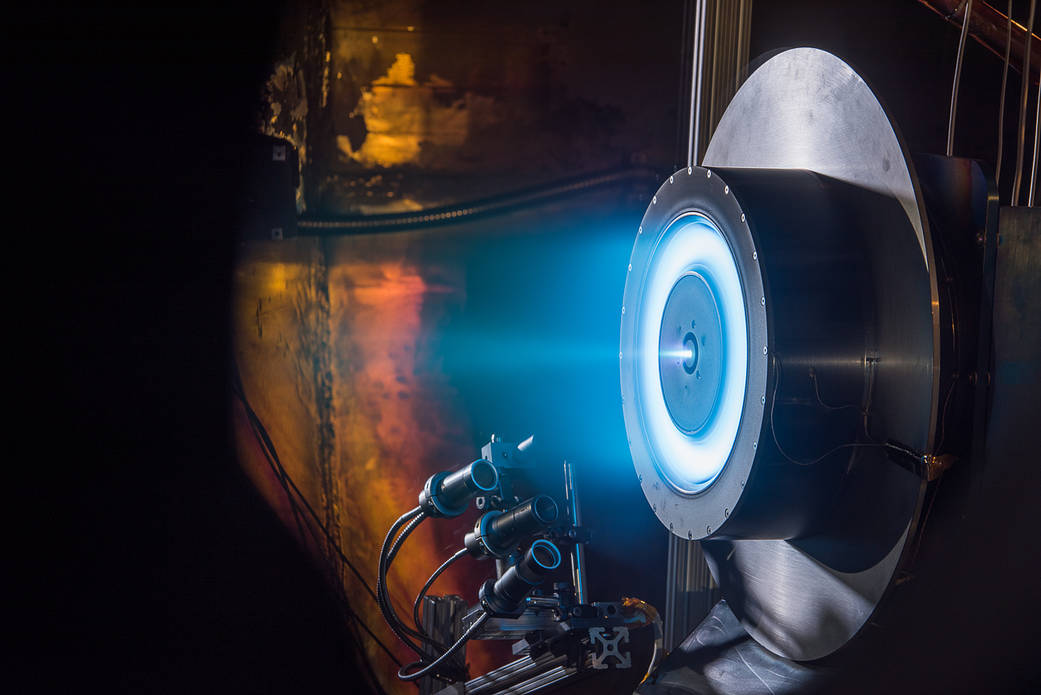Imagine a tiny spacecraft, nimble and efficient, capable of venturing beyond our Moon and even reaching the Red Planet. This exciting future of space exploration is on the horizon thanks to a revolutionary new electric propulsion system developed by NASA.
Electric Engines: A Paradigm Shift for Small Spacecraft
For decades, chemical rockets, with their impressive thrust but bulky size and fuel guzzling tendencies, have been the workhorses of space exploration. This relegated smaller spacecraft to more passive roles, often tethered to the trajectories of larger missions. NASA’s new technology, the NASA-H71M sub-kilowatt Hall-effect thruster, disrupts this paradigm.
This innovative engine operates using low power but boasts an impressive propellant throughput, allowing it to generate significant thrust despite its compact size. This translates to remarkable benefits for small spacecraft, empowering them to:
- Reach for the Stars: Deep Space Ambitions The H71M engine grants these smaller spacecraft the autonomy to travel from Earth orbit to the Moon or even Mars. This opens doors for a new era of planetary exploration, where nimble space probes can be dispatched to investigate celestial bodies, ushering in a golden age of discovery.
- Untethered Exploration: Hitching a Ride, Going the Distance Many small spacecraft currently rely on the launch windows of larger missions. The H71M engine allows these “secondary” spacecraft to deviate from the primary mission’s trajectory, vastly expanding the range of scientific targets they can explore. Imagine a swarm of these scouts deployed alongside a flagship mission, venturing out to map unexplored territories or investigate intriguing anomalies.
- From Fleeting Glances to Lasting Companionship: Orbiting the Wonders of the Cosmos Typically, small spacecraft have limited windows for scientific observation during flybys. The enhanced thrust provided by the H71M engine enables deceleration and orbital insertion, allowing for long-term study of celestial bodies. This paves the way for in-depth analysis of geological features, atmospheric composition, and even potential signs of extraterrestrial life.
Beyond Exploration: Extending the Lifespan of Our Celestial Assets
The innovative design of the H71M engine isn’t limited to deep space exploration. Commercial space companies are already leveraging this technology to develop spacecraft servicing vehicles. These robotic companions will be equipped with the H71M engine, allowing them to reach and service satellites in Geosynchronous Earth Orbit (GEO), essentially functioning as “propulsion jet packs” to significantly extend the operational life of these vital assets. This translates to cost savings, as replacing satellites is a prohibitively expensive endeavor, and ensures the continued availability of critical services these GEO satellites provide, such as communication, navigation, and weather monitoring.
A Collaborative Spirit: Fueling Innovation
While NASA spearheaded the development of the H71M engine, collaboration is key to its success. The space agency actively seeks partnerships with U.S. companies developing small spacecraft with demanding propulsion needs. This not only benefits the companies by providing them with cutting-edge technology, but also creates a pathway for NASA to acquire these advancements for future planetary missions. This symbiotic relationship fosters a spirit of innovation, ensuring that the H71M technology continues to evolve and push the boundaries of what’s possible in space exploration.
The Future Beckons: A New Era of Discovery Awaits
The H71M engine represents a quantum leap forward in space propulsion technology. By enabling small, efficient spacecraft to venture into the cosmos, it paves the way for a new chapter in space exploration. Imagine a flotilla of these probes, equipped with advanced scientific instruments, venturing out to study the solar system and beyond.

This innovative engine, developed through collaboration between NASA and U.S. industry, promises to propel us further into the vast expanse of space and unlock a wealth of new discoveries, forever changing our understanding of the universe and our place within it.



















